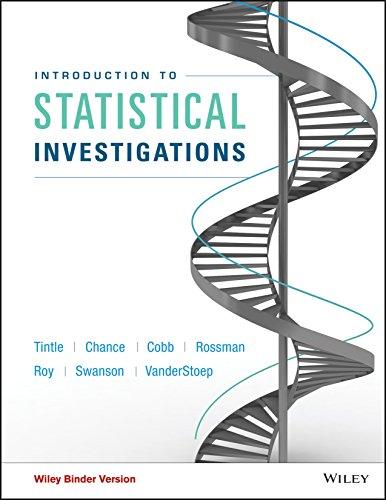Question
On April 27, 2020, the Financial Times, one of the leading business newspapers, published an article titled Australia's NAB slashes dividend as coronavirus hits earnings.
On April 27, 2020, the Financial Times, one of the leading business newspapers, published an article titled "Australia's NAB slashes dividend as coronavirus hits earnings". Read the extract of the article in italics and answer the questions below.
a. From the signaling perspective, discuss the implication of NAB's planned dividend cut.
b. What form of capital raising NAB plan to use to get A$3.5bn ($2.3bn)?
c. "But analysts questioned the decision by Australia's second-largest bank by market capitalization to maintain any form of payout as it turned to investors for fresh capital." Why did analysts question NAB's decision? Discuss. (Hint: relate this to the pecking order hypnosis of capital structure)
d. According to Modigliani-Miller's (MM) theorem on capital structure payout policy, capital structure or payout policy is irrelevant for firm value. List at least three capital market imperfections in the real world that could produce deviation from outcomes of the MM theorem.
"National Australia Bank will raise A$3.5bn ($2.3bn) and slash its dividend by almost two-thirds as it braces for turmoil caused by a coronavirus, including a surge in unemployment and a plunge in house prices.
But analysts questioned the decision by Australia's second-largest bank by market capitalization to maintain any form of payout as it turned to investors for fresh capital. Like in the UK and Europe, lenders in Australia have been under pressure to hall shareholder payouts during the crisis.
Ross McEwan, the chief executive, told investors on Monday that the lender was taking steps to manage the rapid and unprecedented upheaval" caused by the pandemic which contributed to a 51 percent year-on-year drop in first-half profit
"Measures to contain the spread of Covid-19 have had a sudden and materially negative impact on economic activity," said Mr. McEwan, making his first earnings announcement since joining NAB in December
The bank has forecast that the Covid-19 crisis will cause unemployment in Australia to rise to 11.7 percent and property prices to fall 10 percent this year. NAB expects that the Australian economy, which has not suffered a recession in three decades, will contract sharply this year and not return to its pro-coronavirus levels until 2022.
The bank cut its interim dividend to 30 cents per share, from 83 cents per share a year earlier. The A$3.5bn capital raising will boost the bank's tier one capital measure of balance sheer strength to 11.2 percent. NAB's shares were untraded on Monday due to the capital raise.
Step by Step Solution
3.38 Rating (154 Votes )
There are 3 Steps involved in it
Step: 1

Get Instant Access to Expert-Tailored Solutions
See step-by-step solutions with expert insights and AI powered tools for academic success
Step: 2

Step: 3

Ace Your Homework with AI
Get the answers you need in no time with our AI-driven, step-by-step assistance
Get Started


